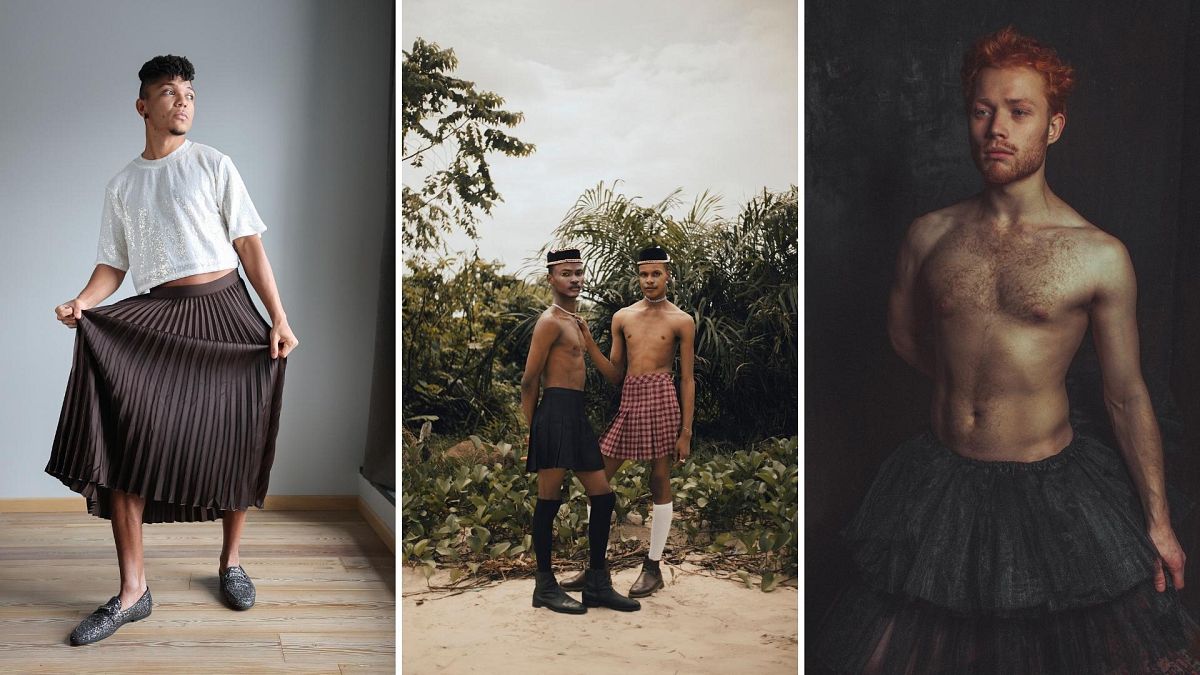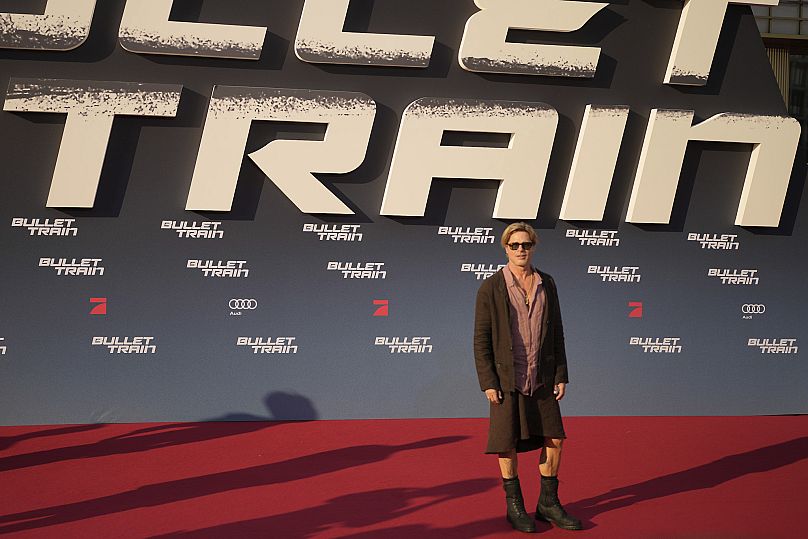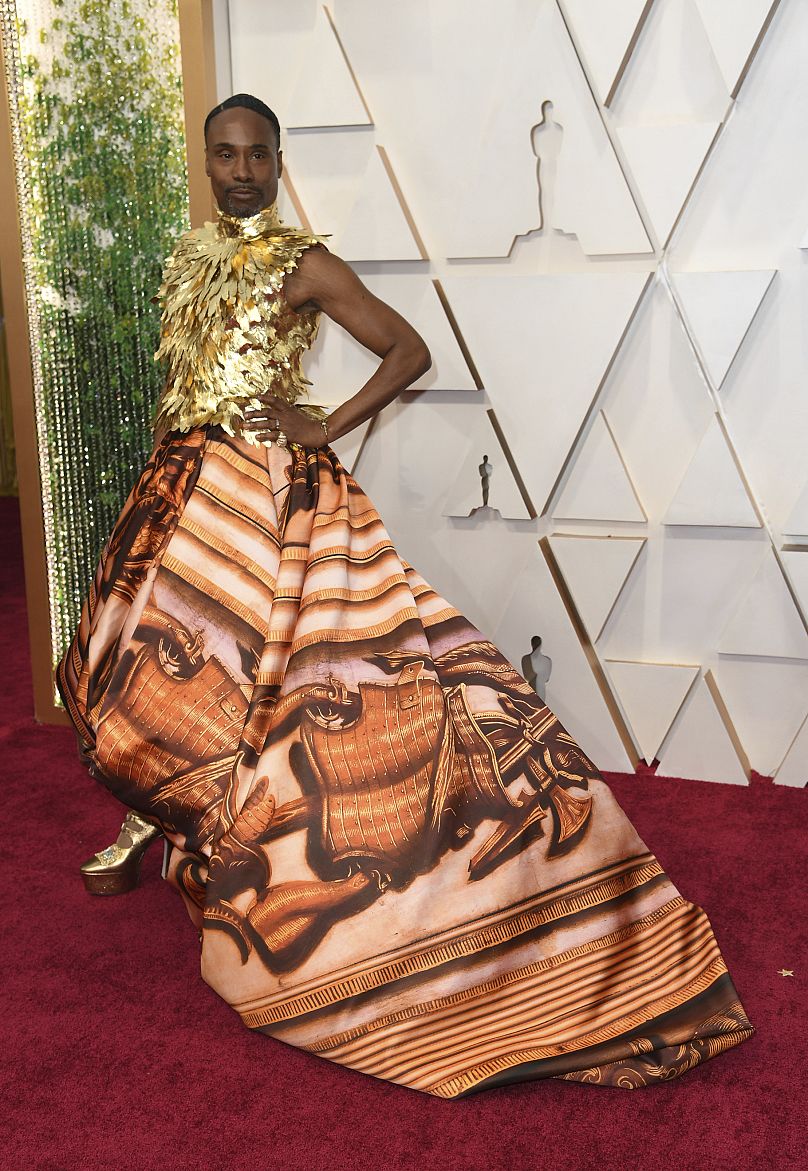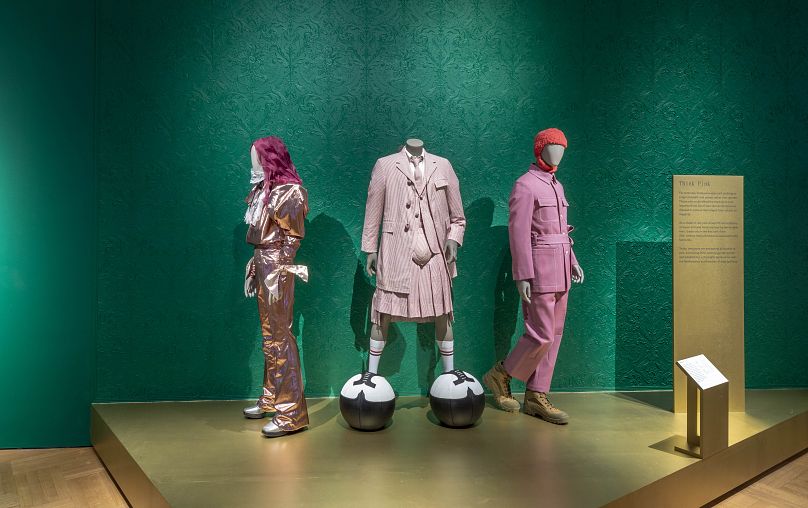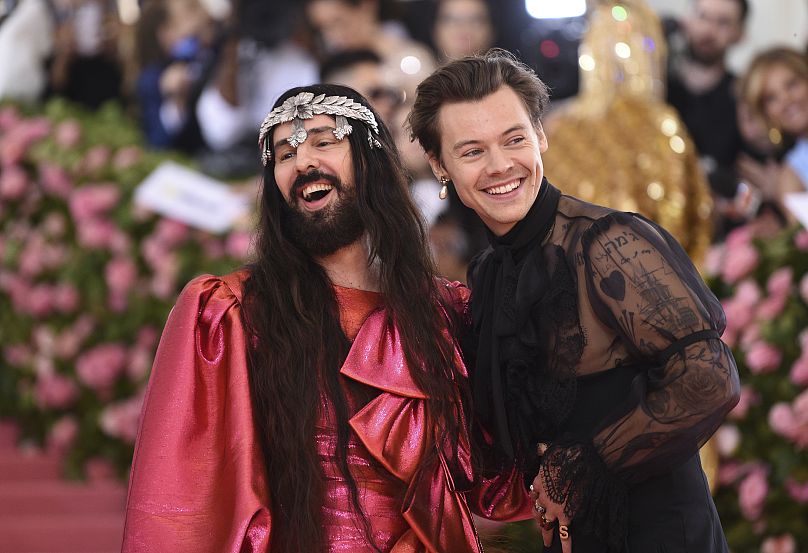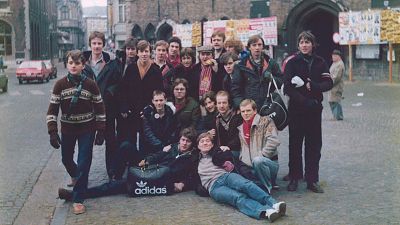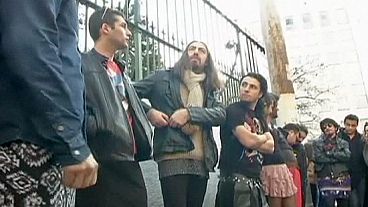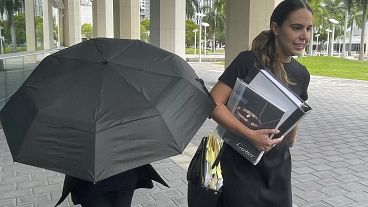As Brad Pitt and a UK binman ditch their trousers to appreciate the breeze, we speak to a fashion expert on the skirt revolution.
The summer sun is beating down, but you’re a man and trousers are expected of you. Not so anymore. From Hollywood superstars to local binmen, men around the globe are dropping their trousers and starting a skirt revolution.
This week, Brad Pitt wore a kilt to the Berlin premiere of his latest film ‘Bullet Train’. When quizzed on his fashion choice, he simply answered “the breeze, the breeze”.
And it may not have been on the red carpet, but binman Lee Moran made a similar splash when he turned up to work in a high-visibility kilt.
Moran had been told he couldn’t wear shorts to work due to health and safety concerns. Facing a sweltering heatwave, the British binman opted for a kilt which wasn’t regulated against to save from sweating through the shift.
One of the biggest proponents for more androgynous male style choices is Harry Styles.
Much has been made of Harry Styles’ now signature androgynous looks, from his sequined jumpsuits to his Vogue frontpage dress. The popstar is so dominant in culture today, he’s even spawned a course dedicated to him at Texas State University.
Are skirts going to join the mainstream man’s wardrobe?
It's not so simple, suggests Jay McCauley Bowstead, a Lecturer in Cultural and Historical Studies at the University of Arts London.
When looking to Met Gala runways and Vogue covers for fashion trends, many of the celebrities in question are looking to gain publicity through attention grabbing clothes choices.
“For a long, long time, there has been an expectation that the gown that a celebrity, actor or musician wore would be scrutinised,” McCauley Bowstead says.
“So there's no inherent reason why, as a male celebrity, you wouldn't want to also capture that attention. Given that garnering attention is kind of your job.”
But even if celebrity motivations for wearing skirts and dresses may just be to capture attention, there’s still a cultural undercurrent shifting in male clothing to propel them to those choices.
As we move away from a hegemony of the dinner jacket as male formal dress, non-celebrities are still seeing examples of more androgynous ways to dress.
“Having things on the catwalk or on the front of magazines that feel very avant-garde or the fact that it’s not being worn by most people on the street doesn't mean that those representations are meaningless, because they nevertheless, could be argued to represent a form of resistance or sort of symbolic contestation of the dominant order of gender,” McCauley Bowstead explains.
And it is still a controversial resistance, McCauley Bowstead argues. There’s a reason that Lee Moran attracted press attention when he turned up to work in a kilt. The cultural taboo for men wearing skirts is still dominant.
“The vast majority of men, myself included, would not be comfortable wearing a skirt,” McCauley Bowstead says. “I think of myself as someone who has very progressive views on gender and work in a very queer friendly and liberal context. And I wouldn't wear a skirt.”
Fashioning Masculinities throughout history
It’s important to remember though that the skirts and sequins of today’s androgynous-dressed celebrities are not inherently male or female.
The exhibition ‘Fashioning Masculinities’ running at the Victoria & Albert Museum in London gives visitors a history of menswear throughout history.
While the final room contains the actual dress Billy Porter wore to the 2019 Golden Globes and an indigo outfit from Harry Styles, it’s in the historical outfits that visitors see a broader definition of male clothing.
From the introduction of pink dye in men's clothes to frilly regency dress, the Overdressed section of the exhibition reveals past styles.
"Overdressed is like a fabulous dressing up box where we're covering looks from the 18th century and fabulous portraits with the looks from the 1960s and contemporary fashion to celebrate the moments in history where menswear has embraced colour and decoration," says Rosalind McKever, co-curator of the exhibition "Fashioning Masculinities: The Art of Menswear" at the Victoria and Albert Museum (V&A).
"We really wanted to think about the ways that contemporary womenswear has been influenced by historical menswear. So we have wonderful examples where contemporary designers -- we have a great look by Gianni Versace, which is a womenswear coat -- has drawn on historical menswear. In this case, a painting from our own collection from the early 17th century where we see a doublet (jacket) and very broad breeches being reinterpreted by Versace as a tightly fitted jacket and large skirt," says McKever.
Queer appropriation and skirt wearing
A man wearing a skirt is still today an undeniably queer aesthetic. So much so that Harry Styles’ fashion choices have sometimes been accused of appropriation when he doesn’t disclose his sexuality.
The appropriation question around Harry Styles asks whether wearing stereotypically female clothing as a man was an insincere use of the queer community’s choices.
Dr Justin Bengry, lecturer in Queer History at Goldsmiths, University of London believes we have to look past current essentialist definitions of queerness to embrace experimentation from people like Harry Styles.
“We have incredible histories of sexual and gender diversity and fluidity across period, place and culture. This historical reality of our incredibly queer past should inspire us to consider the possibility at least of a wonderfully queer present, in which people, whether celebrities or not, need not define themselves with labels that we choose for them even if that might satisfy our needs to be seen and validated,” he says.
“So, just as someone might be 'potentially straight' and exploiting that privilege to use the subversive potential of queerness to draw attention to themselves, that person might also be 'potentially queer'. Or they might be something else that, for them at least, doesn't really fit into those labels,” Bengry adds.
McCauley Bowstead also notes that when considering Styles’ fanbase (mostly young women), his status as an attractive character is helping change perceptions in the heterosexual community.
“There are lots of young women who are obviously attracted to this softer performance of masculinity, you could argue that represents a kind of queering of heterosexuality, or a space where young women are returning the gaze which has tended to focus on them,” he says.
